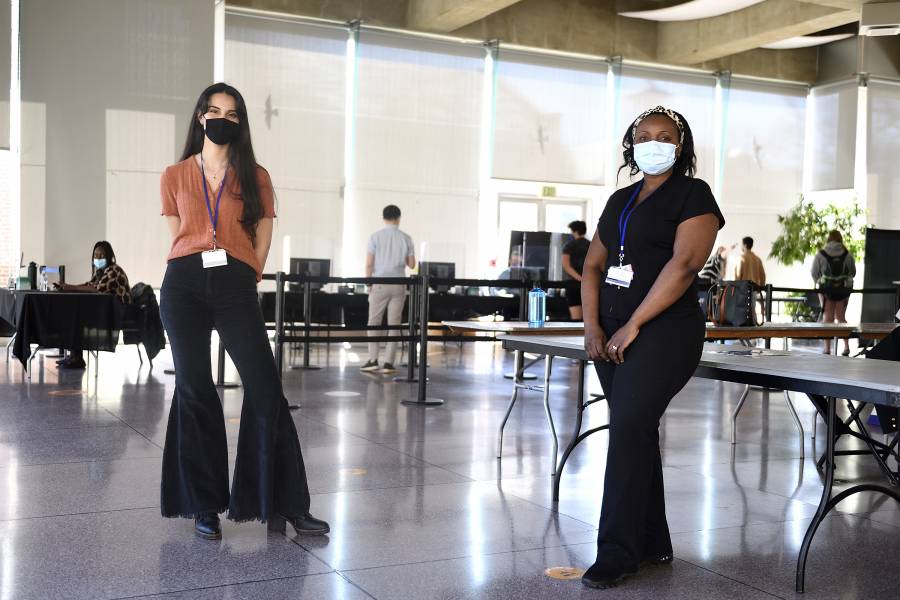Johns Hopkins surpassed 100,000 asymptomatic COVID-19 tests this week, a milestone that represents not only mass participation in testing operations among on-campus university affiliates, but also a clinical and logistical feat requiring coordination across Hopkins divisions, departments, and offices.
"When we and our colleagues at Johns Hopkins Medicine implemented mass asymptomatic testing for the spring semester, we knew it was an important additional public health control measure that allowed us to expand on-campus activities," says Jon Links, vice provost and chief risk and compliance officer for Johns Hopkins University. He is also a professor in the Department of Environmental Health and Engineering at the Bloomberg School of Public Health. "It's turned out to be even more critical, as it has also provided early detection of small clusters and a consequent ability for us to nip things in the bud."
The 100,000 figure includes tests conducted during the fall semester, when on-campus personnel and activities were more restricted. The spring semester return to campus was possible in part because of the massive augmentation to the university's testing and contact tracing program—a scale-up that required mobilization and coordination on a grand scale.
All Johns Hopkins undergraduates are currently required to complete COVID-19 tests three times a week, and other Hopkins affiliates who conduct in-person work on university campuses—faculty, staff, graduate students, postdocs, and trainees, for example—are required to complete a test once a week, with some exceptions. Tests are conducted at nine locations across the university's divisions: five sites are on the Homewood campus and the remainder are located on the campuses at East Baltimore, Peabody Institute, and Harbor East, with one in Washington, D.C. The Homewood campus sites are staffed by 23 Johns Hopkins employees and 10 graduate students. The other sites are staffed by nine employees.
All sites use "passive drool" saliva-based tests, which are transported by the university and processed on-site in a Johns Hopkins Hospital laboratory by pathologist Christopher Gocke.
The effort also relies on the integration of technology. Test results are posted to the hospital's Epic medical record system and disseminated via MyChart, a consumer medical records app that integrates with Epic. The Prodensity app helps affiliates monitor any symptoms and demonstrate compliance with testing requirements. The Prodensity app is also used as a form of campus pass—affiliates present green passes indicating compliance in order to access buildings.
But the health and safety of the university community depends on yet a third leg of the testing and compliance effort: a massive contact tracing program managed by the university and staffed by university employees. The program—called Investigation, Contact Analysis, and Notification, or ICAN—reaches out to individuals who have tested positive to determine who else may have become exposed to the virus in the workplace or classroom. Representatives from ICAN—11 full-time contact tracers, one redeployed Johns Hopkins employee, six graduate students, and one epidemiologist—then connect with those exposed individuals to advise on self-quarantining and symptom monitoring.
"Achieving this milestone is incredibly meaningful," says Julie Cady-Reh, Director of Continuous Improvement for Johns Hopkins University and Bloomberg School of Public Health faculty member. "The massive amount of energy required for effective strategic planning and coordination across many critical JHU functions was daunting. This accomplishment is truly one of the most impressive multidisciplinary feats I have ever witnessed."
Posted in University News
Tagged coronavirus, covid-19








